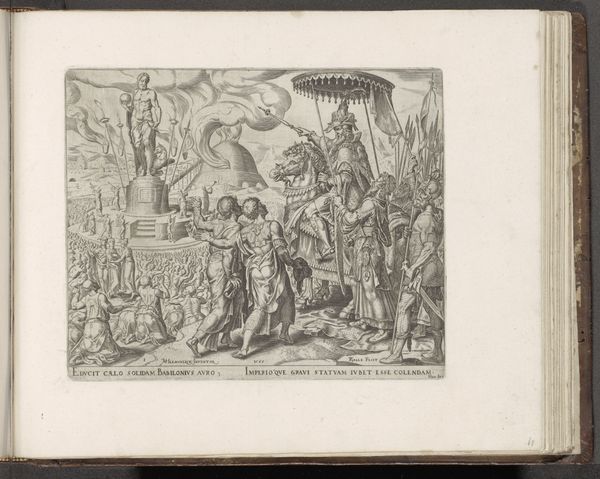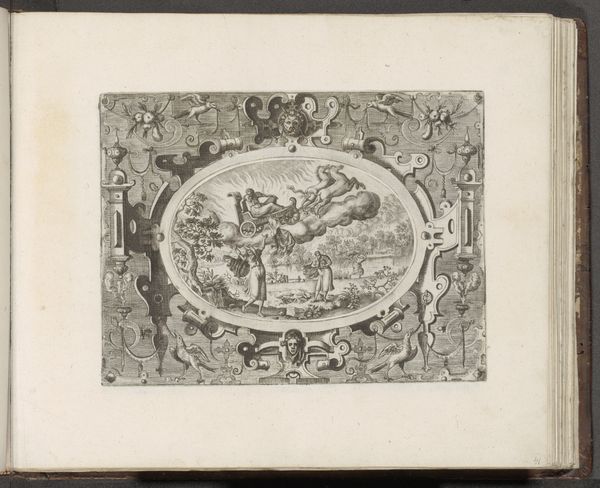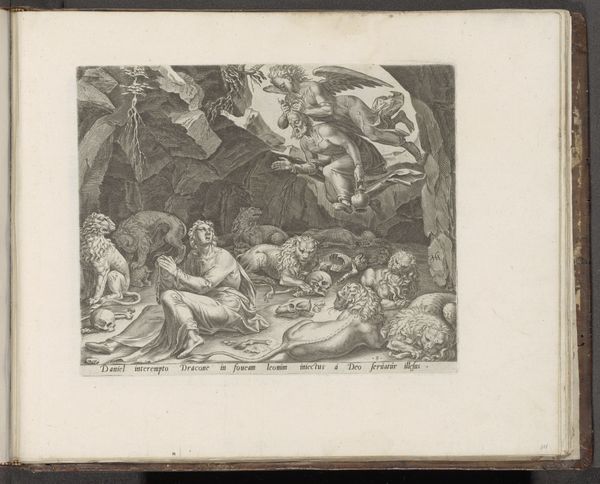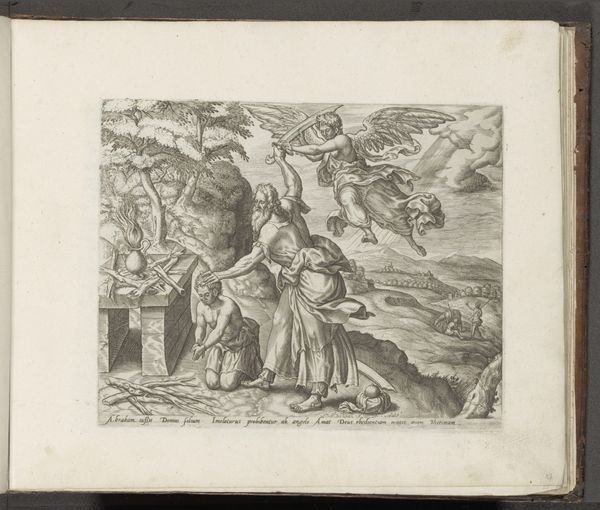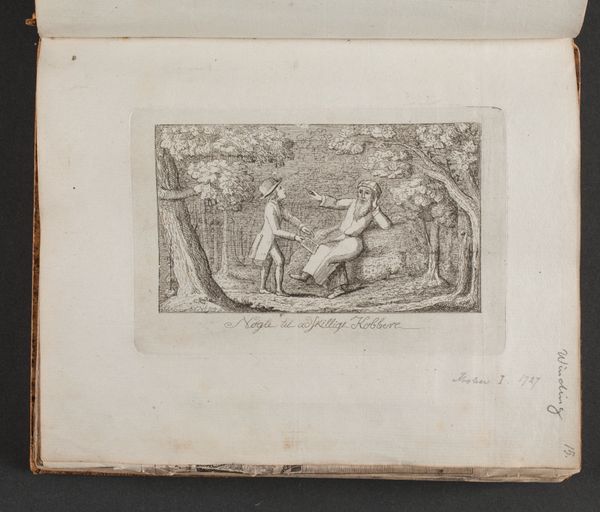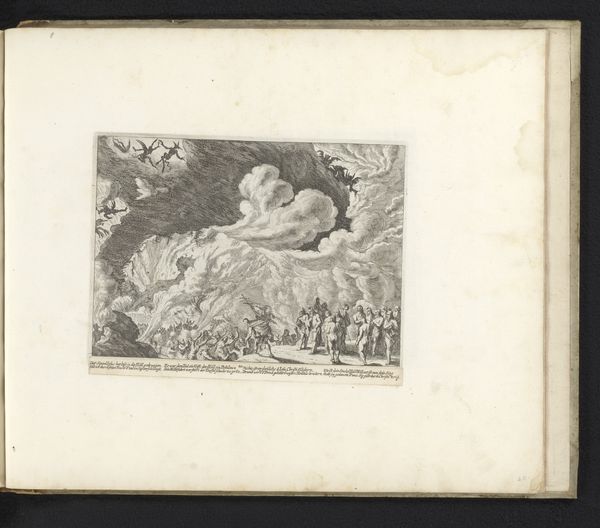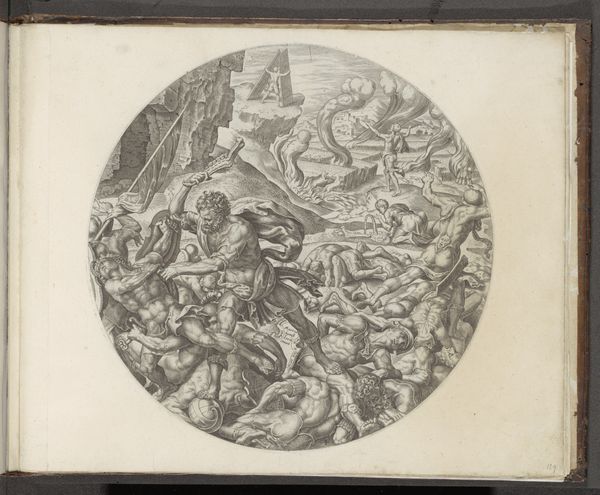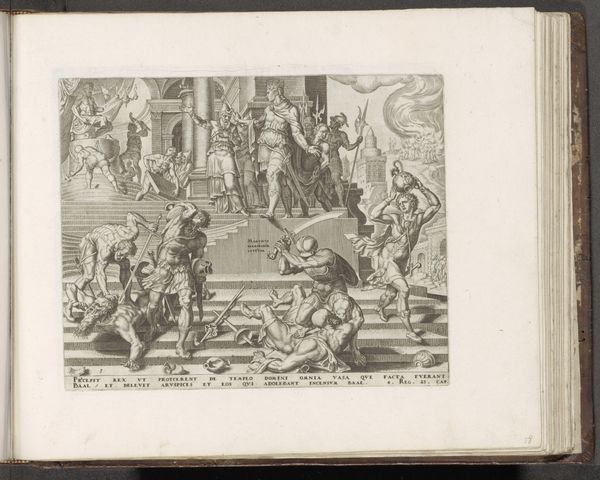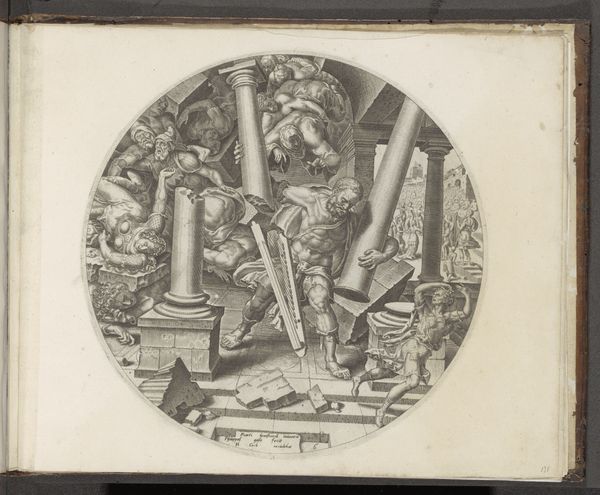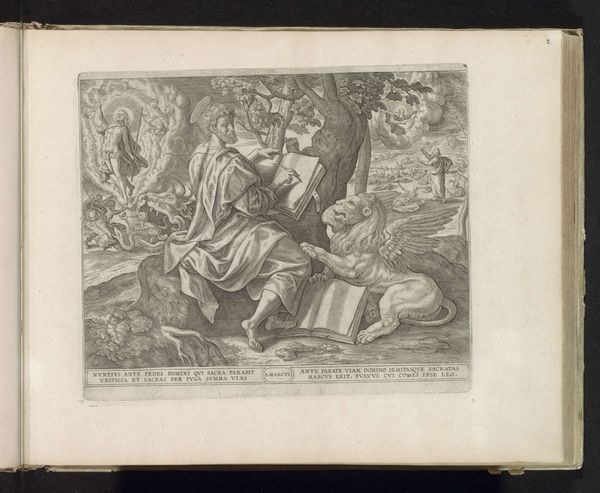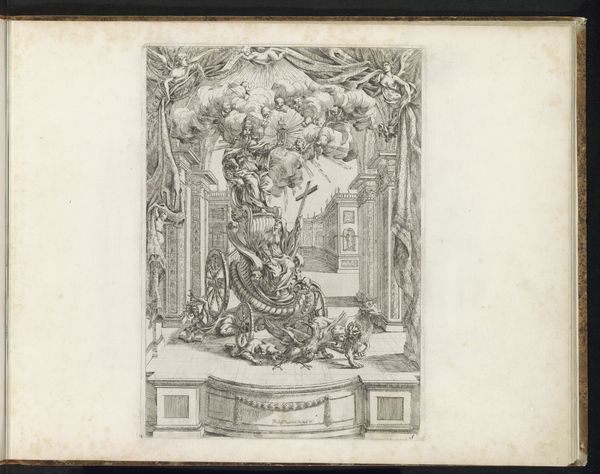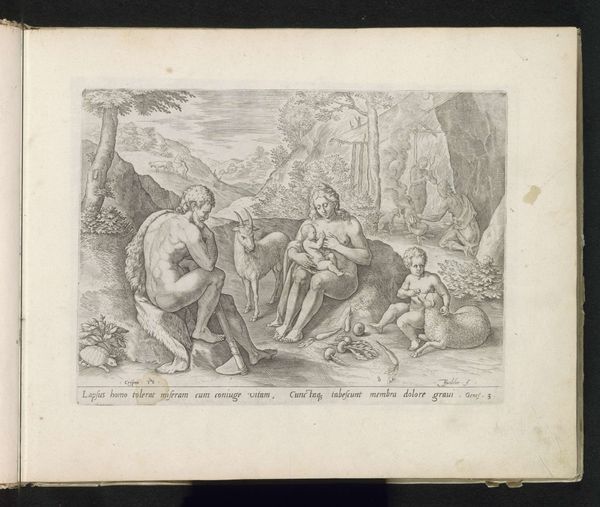
print, intaglio, engraving
#
narrative-art
# print
#
intaglio
#
old engraving style
#
classical-realism
#
figuration
#
11_renaissance
#
line
#
history-painting
#
northern-renaissance
#
engraving
Copyright: Rijks Museum: Open Domain
Philips Galle created this engraving, “Simson Doodt de Leeuw,” likely in the late 16th century in the Netherlands, drawing from the Old Testament story of Samson slaying a lion. The image itself creates meaning through familiar visual codes. Its circular format references classical tondos, associating Samson's strength with the virtues of antiquity then being revived through Renaissance humanism. Galle presents Samson not as a divinely empowered figure, but as a muscular, active hero whose stance and physique draw from classical sculpture. The work shows a Northern European tendency to interpret Biblical stories through a classical lens. The engraving may have been made for a wealthy patron keen to display his knowledge of classical and biblical themes. Works like these allowed the artist to establish his reputation within the cultural institutions of his time. By studying period literature and the artist's own context, we can better understand how this work spoke to its original audience. The meaning of art always depends on its social and institutional context.
Comments
No comments
Be the first to comment and join the conversation on the ultimate creative platform.
